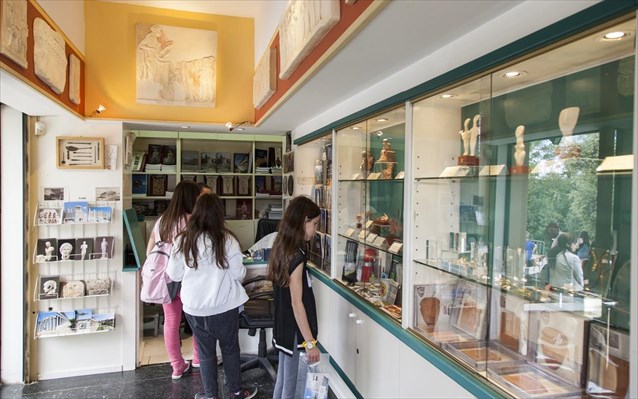The archaeological site of Akrotiri, Santorini, Photo: kathimerini.gr
When, during a working meeting with decision-makers from the Ministry of Culture and Sports held in March, Prime Minister Antonis Samaras spoke about a policy aimed at improving the performance of archaeological sites and museums, he actually meant something that was implicit, something that exists even in countries that do not have such a rich cultural heritage as Greece. However, concerns about the effects of such interventions were expressed then. Moreover, many prime ministers and ministers had promised to work to improve the functioning of museums.
This year's timely actions in 33 archaeological sites and museums, their extended opening hours, from 8:00 am to 8:00 pm seven days a week, the reconstruction of the pavilions selling a variety of informational material and souvenirs, the new articles added to them, the appointment of additional staff have already led to the first optimistic results, even before the start of the active tourist season.
The good news relates not only to the number of visitors but also to the increased revenues of the Archaeological Resources and Expropriations Fund. The continuously updated data on the movement of visitors and revenue to museums show an 115.81% increase in revenues, for example, in the archaeological sites Terra or Akrotiri (present Santorini), followed by the Archaeological Museum in Heraklion with 109.59%, the Museum of the White Tower of Thessaloniki 100.26%, the Acropolis in Ialissos (Rhodes) 95.85%. The lowest proceeds are reported at Sounion, but a 14.12% increase in revenue was registered even there.

Although the archaeological complex in Athens, including the Acropolis, the Theatre of Dionysus, the Ancient Agora, the Roman Agora and the Library of Hadrian, reported just a 17% increase in revenue, this is because of the common price for these monuments. It is also apparent that some sites have recovered, namely the museum in Kerameikos, which reported a 35% increase in revenue and the National Archaeological Museum almost 24%. Even the Byzantine and Christian Museum that is lovely but rarely visited, probably because it is not included in the routes of tourist companies, this April reported a 68.89% increase in revenue whereas only 26,282 people had visited it in 2013.
According to Minister of Culture Panos Panagiotopoulos, April data are only the beginning. He expects even better results from the new measures, not only in terms of the revenues from tickets and pavilions for the sale of informational material. "The reports were previously made every 6 or 7 months. Now the relevant departments are obliged to provide information on the number of visitors and revenues on a daily basis so as to decide on corrective actions as quickly as possible," he said.
In addition to the extended opening hours, the pilot programme (in force from 1 April to 31 October) that includes 33 archaeological sites and museums, which attract 95% of visitors and revenues, provides for the following measures: reconstruction and expansion of pavilions selling informational materials and souvenirs, improvement of the surroundings and of the functioning of ticket issuing and validating devices, many of which did not work in the past (due to the damaging effects of the sun), expansion and reconstruction of cafes so as to offer items at decent prices, application of new cultural marketing in cooperation with the Ministry of Tourism and representatives of the tourism business. The promotion of museums and sites on the Internet is being improved within this context too.

The experiment is successful but it is necessary to extend the pilot project to museums and archaeological sites in difficult areas, such as Epirus, Eastern Macedonia, North Aegean and others. In these areas, the cultural heritage is not only "a tool for development in such a critical time for the Greek economy" but also a national policy.
Durability of monuments
However, the monuments must be prepared if the number of tourists in Greece increases, as according to the Union of Greek Tourism Enterprises this year it will reach 19 million and the country will welcome 125,000 visitors a day. "The archaeological sites are included in the flow of visits depending on the month", emphasizes general secretary of the Ministry of Culture and Sports Lena Mendoni.
The example of the Acropolis last year is indicative. There were days when the number of visitors reached 18,000 from 10.00 am to noon. According to Minister Panagiotopoulos, the monument is not designed for such a large number of tourists. The capacity of the Propylaea (the entrance to the Acropolis) is not more than 2,500 people per hour.
For this reason, a commission of representatives of the Ministry of Culture, the union of cruise ship owners and more has been formed to resolve problems of a similar nature and this year it will sit again. Moreover, in such difficult days with many visitors everyone helps regulate the flow of people, from masters of cruise ships to traffic policemen, guards at museums and archaeological sites, etc.